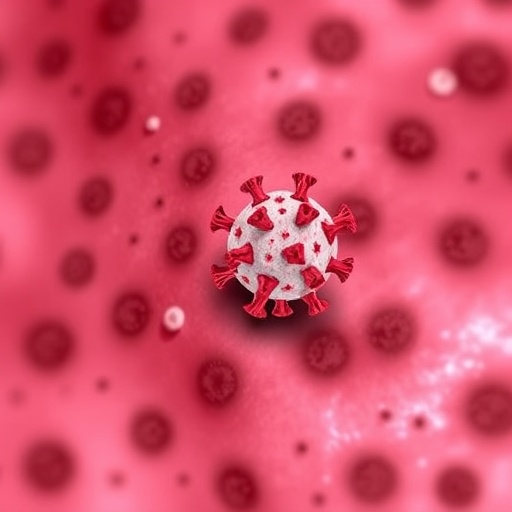Credit: Chacko AM et. al., Duke-NUS Medical School, Singapore
Singapore, 6 June 2017 – Commonly used to detect solid tumours, positron emission tomography (PET) paired with the glucose metabolism probe, fluorodeoxyglucose (FDG), is considered 'old' technology in the field of cancer. A team from Duke-NUS Medical School (Duke-NUS) and Singapore General Hospital (SGH) has now found a new use for this 'old' technology in another field: infectious diseases research. Using FDG-PET as an imaging tool for dengue infection in mouse models, the team has potentially uncovered a novel and non-invasive way to track the infection in real-time and more accurately assess the effectiveness of new treatments for dengue.
Similar to how radar is able to track and visualise where ships are in the ocean, PET is able to track and visualise where in the body glucose is taken up by cells. FDG is a radioactive version of glucose, which when injected into a mouse and absorbed by cells, can be seen using PET. Inflammation of the small and large intestines is known to occur in dengue-infected mice, and with it cellular uptake of glucose and FDG increases. Knowing this, the team set out to use PET-FDG to visualise inflammation as a marker of dengue infection in mice.
"To our knowledge, this is the very first time PET has been systematically evaluated in the field of acute viral infectious diseases. We are excited to be able to repurpose this non-invasive technology, and generate such robust images of live dengue infection in the body," commented the lead author of the study, Duke-NUS Assistant Professor Ann-Marie Chacko from the Cancer and Stem Cell Biology Programme, and head of the Duke-NUS for Translational and Molecular Imaging (LTMI).
Not only was increased inflammation observed in the spleen, and small and large intestines of dengue-infected mice, but the inflammation subsided after antivirals were given. In addition, tracking glucose uptake with FDG-PET predicted the progression and severity of dengue infection, as well as the effectiveness of treatment.
"Being able to visualise dengue infection in the body potentially transforms how the effectiveness of new dengue therapeutics is assessed. We look forward to collaborating with academic and industry partners who are looking to validate their new dengue therapeutics using this novel approach," added Professor Subhash Vasudevan from the Emerging Infectious Diseases Programme at Duke-NUS and senior author of the publication.
Dr Jenny Low, Senior Consultant with the Department of Infectious Diseases at SGH and a clinician on the research team explained, "Traditionally, in research, the amount of virus in the blood is measured and used as an indicator of disease severity. What makes the findings of this study so ground-breaking is that we may have a non-invasive way to track dengue infections in our patients more accurately during clinical trials to better measure if the experimental treatment given is effective."
Whether the basic laboratory findings are translatable to dengue patients hinges on a joint SGH/Duke-NUS study led by Dr Shirin Kalimuddin, Consultant with the Department of Infectious Diseases, SGH. This clinical study is currently recruiting dengue patients as volunteers. Ultimately, the hope is that non-invasive PET-FDG imaging can be used to transform the assessment of new dengue treatments in clinical trials so that infections may be more effectively treated in the clinic. To find out more about this study, please contact study coordinator, Ms Ang Sze Chien at (65) 9848 9297.
###
Published on 4 May 2017 in Journal of Clinical Investigation Insight, this research is supported by Duke-NUS start-up funds, Duke-NUS Khoo Pilot Award, the Singapore Ministry of Health's National Medical Research Council under its Clinical Trials Grants scheme (NMRC/CTGCoD/0001/2015) and Cooperative Basic Research Grant scheme (NMRC/CBRG/0103/2016 ), as well as the National Research Foundation Singapore under its Open Fund – Young Individual Research Grant (NMRC/OFYIRG/0003/2016) and administered by the Singapore Ministry of Health's National Medical Research Council.
Media Contact
Yen May Ong
[email protected]
65-984-11321
@dukenus
http://www.duke-nus.edu.sg
Related Journal Article
http://dx.doi.org/10.1172/jci.insight.93474
############
Story Source: Materials provided by Scienmag




